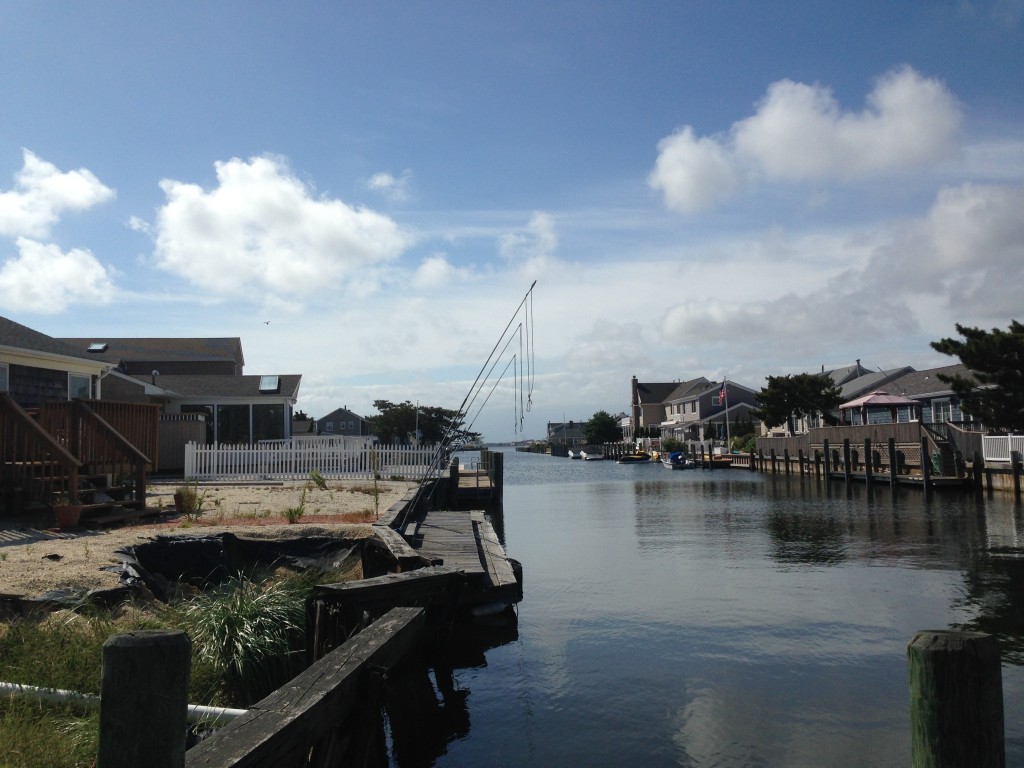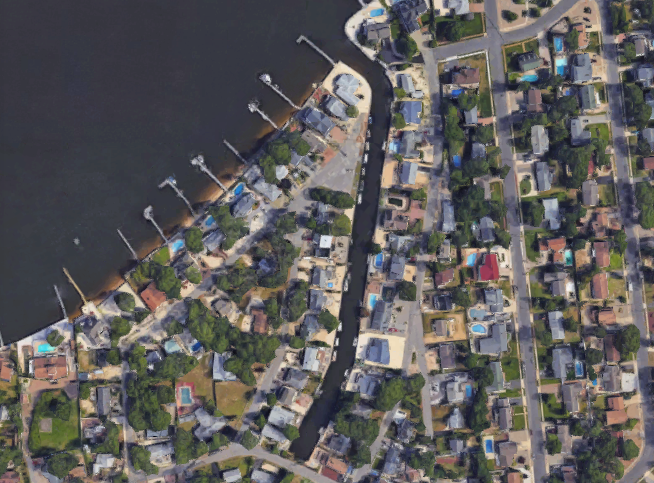A home on a lagoon comes with its perks: a place to tie up your boat, set out some crab traps and catch the sun rise or set. But it often comes with a higher property tax assessment which one group of residents has said is being made worse by the fact that some homeowners can no longer reap the benefits.
Getting a dredging project approved – even a small 50-by-100 foot entrance that just needs a bit of sand removed – is an arduous process in New Jersey and comes with questions over whether homeowners should pay out of their pockets to dredge public waterways.
On the aptly-named Lagoon Drive, in the Nejecho Beach neighborhood off Mantoloking Road, the problem has come to a head. Superstorm Sandy dumped an immense amount of sand at the mouth of the lagoon, but it was never dredged during a state-run dredging project funded by the federal government after the storm. Now, residents say the conditions at the end of the waterway, which leads to the Metedeconk River, are dangerous. Hitting an unexpected shallow area in a boat grinds the vessel to a halt and jolts passengers.
|
|
“We’ve had some injuries,” said Norm Gross, a resident of the street. “My neighbor banged his head badly, cut his head. And we’re not aware of all the injuries because outside residents use the lagoon.
The question of who pays for dredging projects is an open one in New Jersey. Brick’s own master plan calls for capital funding to be used to dredge lagoons, and in the past, mayors and councils have occasionally funded lagoon maintenance projects.
“As we look ahead, the township should continue lagoon maintenance and shoreline stabilization/protection projects, as well as actively pursue acquiring public access points where the two systems of transportation can meet,” the master plan’s Circulation and Transportation Element states.
Brick officials have committed some resources toward the Lagoon Drive project – about $60,000 to obtain state permits and conduct a hydrological survey. But residents are expected to foot the bill for the project itself, as well as find a “dewatering” site where the sand will be taken after it is dredged. New Jersey’s environmental regulations for dredge material are among the most stringent and complicated in the nation, leaving residents struggling to comply. Plus, there is the matter of getting all homeowners, whose financial health may vary, to agree to spend thousands of dollars each.
“We ask that the homeowners or the associations that are involved identify a site for the dewatering and pay for the dredge,” said township Business Administrator Joanne Bergin.
Bergin said township officials are trying to push the state to help fund lagoon dredging, especially those that were never completed after Sandy when the state ran out of funding.
“We would like to see [the state] keep their word that they said after Sandy, to do all these dredge projects,” said Bergin. “They ran out of money and stopped.”
In some other shore towns, there has been progress. Ocean City, in April, made what was termed a “breakthrough” with the state that could be used as a model for other municipalities.
After years of battling regulations, the Department of Environmental Protection awarded Ocean City the first-ever citywide dredging permit in state history. The city, according to The Press of Atlantic City, has dedicated more than $20 million to dredging projects. Like the Brick residents, Ocean City homeowners have cited safety issues with sand and silt buildup.
“This is very expensive, and we have to do something,” Ocean City Mayor Jay Gillian said.
In Ocean City, plans call for the dredged sand to be used to shore up sedge islands in the bay that have been deteriorating in recent years. The Brick residents said they are hoping to dump the sand in a township-owned plot of land that was used for the same purposes years ago.
Brick officials are also looking at a model a bit closer to home in Ocean County. Barnegat Light, the northernmost town in Long Beach Island, where the state funded dredging of several channels. Lagoonfront residents in Tuckerton, however, may be specifically subjected to a special assessment after that town was denied $2.1 million in state funding to dredge its lagoons.
“One of the reasons we came here was for the lagoons,” said Ihor Huk, another Lagoon Drive resident. “We came from up north and I never even knew this existed, at least at a reasonable price.”
The price for boat repairs due to the shoaling, however, has cost Huk $4,000.
John O’Donnell, another resident, said the town dredged the lagoon 18 years ago and said the same thing needs to happen now.
“Sandy did in one day what it took 50 years to do,” said O’Donnell. “Brick dredged out the lagoon in 2000, and I’m interested to know what happened between 2000 and now in Brick.”













